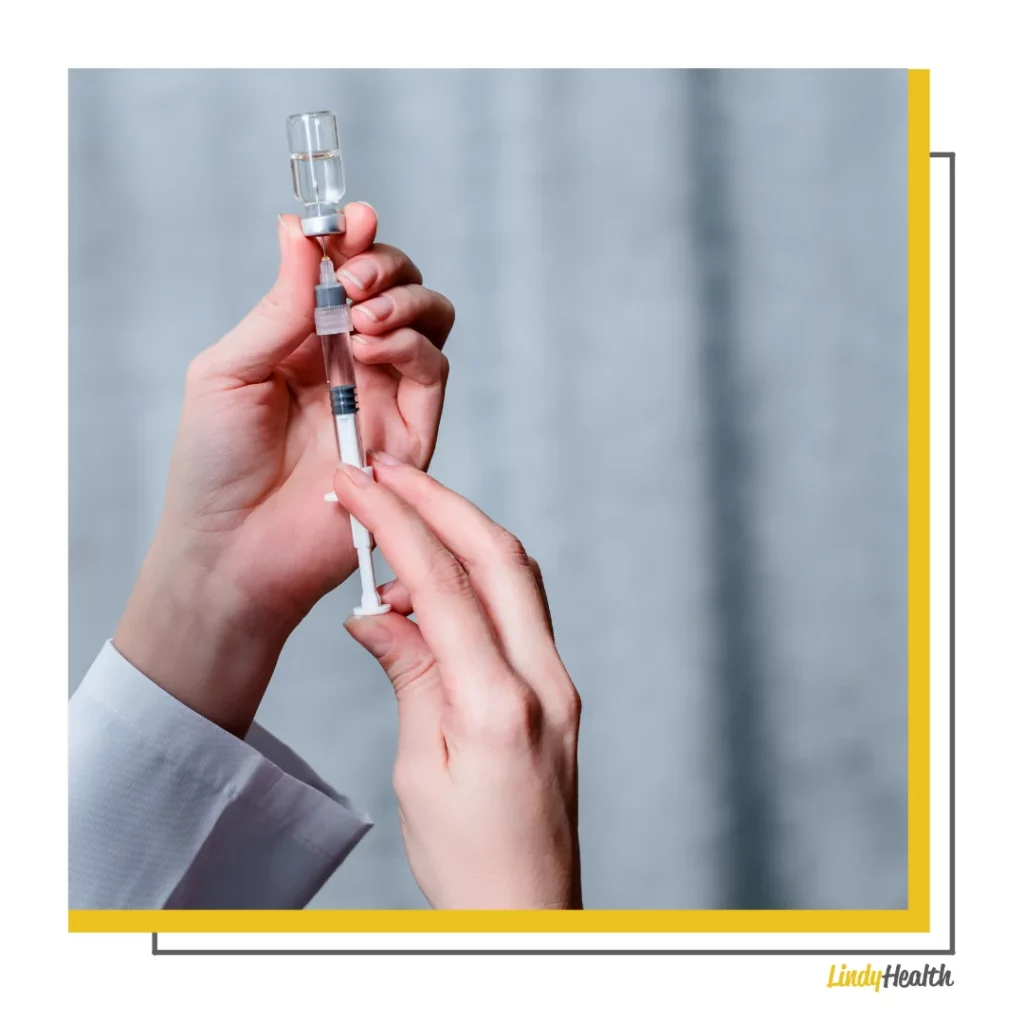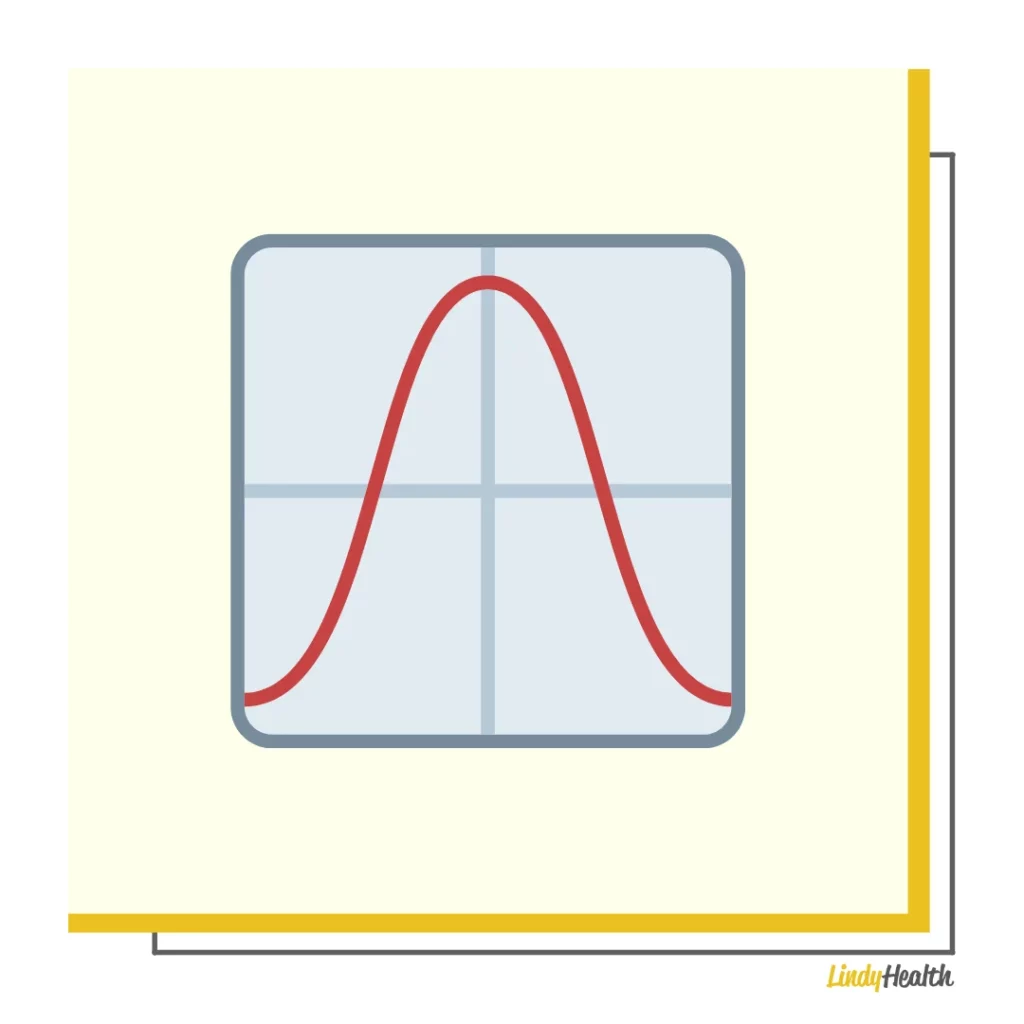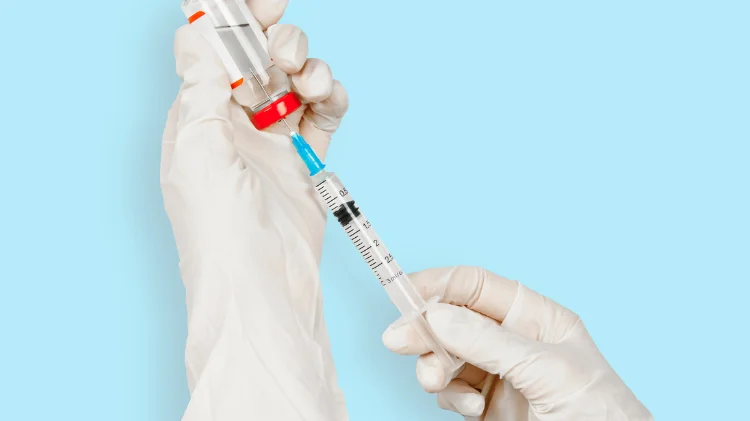Testosterone injections will peak your T levels at the 18–24-hour mark (after Testosterone injection) and return to your base level after one week depending on injection frequency.

TRT (“testosterone replacement therapy”) is perhaps less commonly considered as a solution to recurring ‘low drive’ symptoms many men experience, and more so as a crutch or unnatural ‘enhancement.’
This is a harmful perspective, given the clear benefit derived from TRT for countless men.
Given supervision and guidance with respect to dosing, it is also exceptionally safe. Long-term effects can be discussed or mitigated through HCG (or other alternatives), even after quitting cold turkey.
Testosterone is vital for optimal health in men. This is not purely sexual, but extends to all aspects of well-being and productivity.
Despite this, many men require testosterone therapy to support optimal hormone levels. This can be due to any number of root causes; thyroid problems, hormonal dysfunction, andropause, or physical injury/trauma.
When men complain about depression, low sex drive, and low energy – despite being in their early twenties or thirties, this is often a clear indication of the need for an endocrinologist.
While TRT or testosterone is not a ‘cure all,’ it is increasingly apparent that many of these issues are deeply connected to hormonal problems.
The aforementioned symptoms are often referred to as ‘low T.’
It is critically important for men to know and understand that there is a solution to low libido, lack of energy, low drive, and difficulty focusing.
Many inexperienced users of TRT may have the explicit question of: “when does testosterone peak after injection?” We will provide the answer to this below, as well as address many general concerns with regard to taking testosterone replacement therapy.
Injecting Testosterone: When Does it Peak?
Testosterone injections are administered intramuscularly or subcutaneously, and can be done daily, once a week, twice a week, or once a month.

There are variations to this and the schedule can be adjusted by medical professionals overseeing your treatment plan.
Typically, you’ll want to opt for testosterone cypionate (which is bio-identical to natural testosterone and long lasting).
Generally, cypionate is preferred by those using hormonal therapy as it takes less effort to see faster results.
Propionate, on the other hand, lasts a much shorter duration of time in the body – around 72 hours. This makes propionate a daily subcutaneous injection which means you won’t experience the ‘peak and valley’ feeling associated with weekly injections, but need to put in much more effort to maintain levels.
While you can have physicians administer the injections, they are often easier to be self-administered at home.
Weekly injections come with increased safety compared to daily injections, but also result in a ‘peak’ or high (and corresponding ‘low’).
This ‘peak’ happens right after injection, and then steadily falls until the next dose.
Higher dose injections will provide the benefit of increased testosterone levels more immediately, but they will fall until the follow up dose.
Intramuscular injections will typically peak your testosterone levels at the 18–24-hour mark (after injection) and return to base level towards the start of the next dose.
Those injecting subcutaneously with propionate, daily, can avoid this by supplying the body with a steady stream of testosterone, but there is potential for higher HCT, “hematocrit” levels – which we will discuss next.
The How-To of Testosterone Therapy
Needles vs. Patches, Pellets, Gels, & Creams
Let us address the misnomer that injecting testosterone is somehow more ‘unsafe’ or risky when compared to more expensive and less effective gels, patches, and creams.
By going the IM self-injection route, you’ll save yourself money and have significantly better results short-term and long-term.
Pellets are an effective option, but are actually implanted underneath the skin. They provide a steady stream of testosterone without ‘peak’ points.

However, if the dose needs to be adjusted, this cannot be done for 4 months and also requires an incision to implant them. Pellets end up being much more invasive than other methods and are not recommended for those new to hormonal therapy.
Hematocrit and Injection Safety
When it comes to concerns regarding the safety of injection, this mostly surrounds ‘hematocrit,’ or “HCT” levels.
Hematocrit levels are an indication of the percentage of red blood cells in your body. Normal levels in men range from 41%-50% and 36%-48% for women.
When a person has a high hematocrit, they may experience the condition known as “polycythemia,” which makes you more predisposed to blood clots.
This is concerning, given the elevated risk for DVT (deep vein thrombosis) and stroke.
Many people, as a result, opt for gels, patches, or creams. While patches, gels, and creams are still effective, the efficacy of dosing due to having to be absorbed trans-dermally means that progress may be slower.
Gels and creams in particular can also transfer to other people and objects, making them a less than ideal choice. Those with children or a partner may not wish to involve in the risk of needlessly exposing them to steroids.
You also have to account for proper application time, as if the gel isn’t allowed to fully absorb, you may find yourself sweating it off without getting the full dose. In comparison, a “compounded” cream tends to offer more efficacy when compared to gels and patches.
None of these methods will be as effective and rigorously tested as injections.
That being said, there are many factors at play to help increase the safety of injections, while reducing the risk factors for high HCT.
These include the dose of testosterone itself (lowering to 100 mg a week compared to 200 mg a week), the frequency of injection (once or twice weekly compared to a lower dose daily), hydration, and donating blood.
More frequent or daily injections will increase the HCT count/percentage compared to weekly injections.
While it used to be believed that managing lower, daily doses would reduce the risk and plateau any increase in HCT, this is simply untrue.
The lowest possible dose is always the recommended dose at starting intervals, in addition to doses weekly. You also want to ensure you stay well-hydrated (drinking only water).
100-120mg once weekly in addition to physical activity, hydration, and occasionally donating blood can help keep HCT around 40-50% without any cause for concern.
The Importance of Accurate Blood Tests – Determine if TRT is Right for You
It is extremely important that anyone with doubts as to their hormone levels get a full panel of blood work drawn. A key aspect of this is the time in which the blood test is done – ideally earlier in the morning, which will allow for better and more accurate readings.
Blood levels of testosterone and free testosterone can drop from dawn to dusk dramatically.
You’ll also want to ensure you get multiple tests done at the same time to confirm the accuracy – 400ng/dL may appear on one test, but needs to be confirmed by another.
This can also enable you to press for a pituitary or full sex hormone panel to determine any further underlying issues or causes of low testosterone. Particularly important if you get an even lower reading (100-300 ng/dL).
These kinds of panels will likely include TSH, LH, Cortisol, FSH, and Prolactin.
New users of testosterone injections need not worry about ‘peak’ times if they properly adhere to scheduled dosing and follow the guidance of a professional.
Many of the fears circulating online about injection can be eased by a quick internet search: many of the claims about blood clots are overblown and do not impact most people using a reasonable daily or weekly dose.
As we have touched upon, there are also many ways to manage or mitigate the risk.
Alternatives also now exist in the form of transdermal gels or creams, should injections be deemed unsafe for you.
Taking Testosterone consistently is often more important then being concerned with when Testosterone will peak after injeciton.
- 5 Best Peptide Companies - February 27, 2024
- Best Beginner SARM Stack - February 15, 2023
- Male Hormone Panel Labs Explained - October 31, 2022








